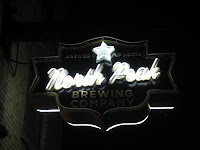So, I finally got a hold of some Galaxy hops! I’ve been
meaning to brew with them for a while because I wanted to make a beer to suit
my wife’s tastes. She loves Galaxy
Unicorn. This should be more sessionable than the Pipeworks brew it seeks to
emulate, yet still very hoppy and fruity.
Here’s the recipe; brew it before they release a new hop
from the Southern Hemisphere that will make Galaxy passé.
Galaxy Cuckoo
Style: Wheat IPA
Water:
2 ½ gallons in brew kettle, heated to 155 F to steep
specialty grains.
1 gallon in separate pot, heated to 155 F for sparging
specialty grains.
Grains:
1 lb. Carapils
Extract:
7 lbs. wheat DME
Hops:
1 oz. Columbus pellets (bittering @ 60 min.)
1 oz. Galaxy pellets (flavor @ 30 min.)
1 oz. Galaxy pellets (flavor @ 15 min.)
1 oz. Citra pellets (aroma @ 5 min.)
1 oz. Galaxy pellets (dry hop)
1 oz. Citra pellets (dry hop)
Yeast:
Wyeast 1272 American Ale II
Other Ingredients:
1 Whirlfloc tab or 1 tsp. or Irish moss (added 15 minutes
before flameout).
Water to add to the wort to achieve 5 ½ gallons of total
volume in the primary fermenter.
¾ cup of corn sugar or 1 ¼ cups of ex light DME boiled in 2
cups of water for five minutes to prime beer before bottling.
Notes:
The original gravity was 1.062 and the final gravity was
around 1.014; ABV should be around 6.3%. I drank my hydrometer sample the other
day after bottling and I was blown away by the aroma. I dry hopped with Galaxy
and Citra; it was a lupulin KO!
I
stand by the logic of dry hopping with pellets after making this one. Whole
leaf hops look pretty cool in the carboy, but they act like one big sponge and
I think some volume is lost. They often impart less aroma in my experience too,
perhaps because the cell walls aren’t broken down as much by the extrusion
process that pelletized hops go through. Just a hypothesis; don’t quote me on
that one.















































